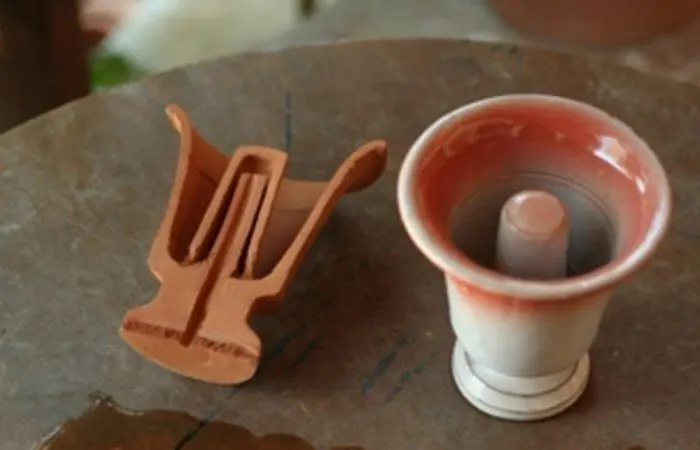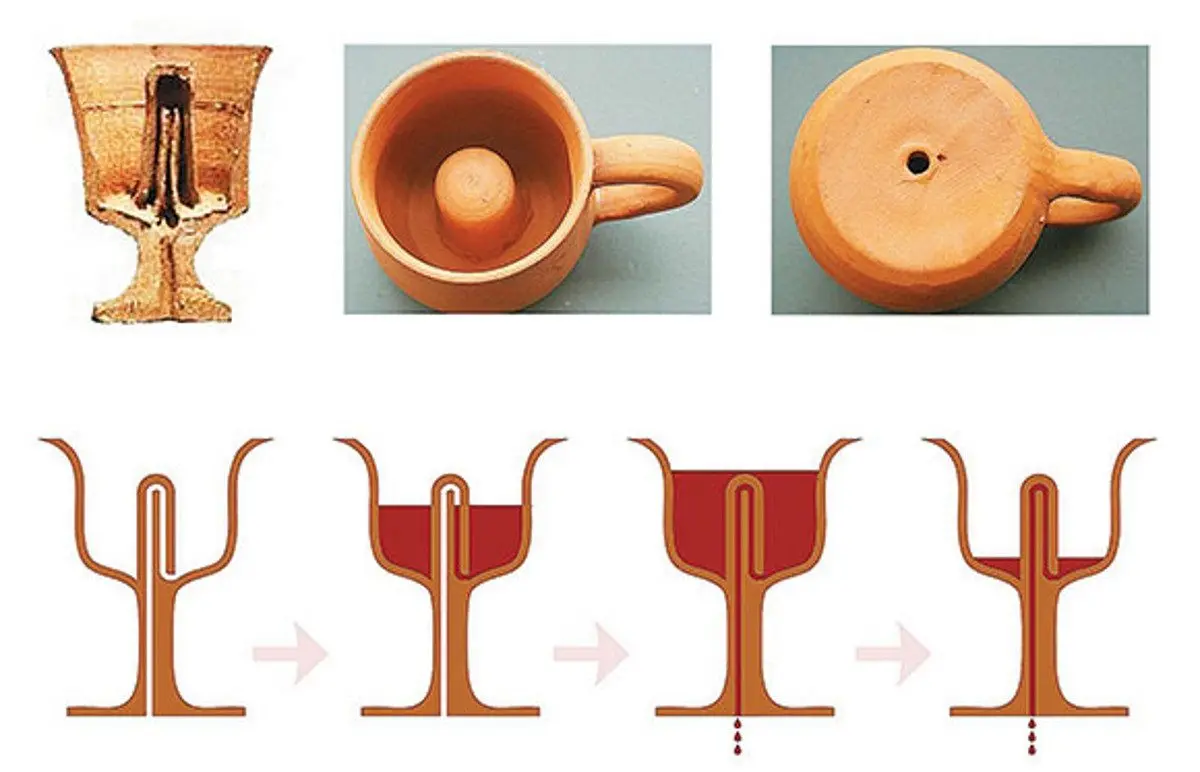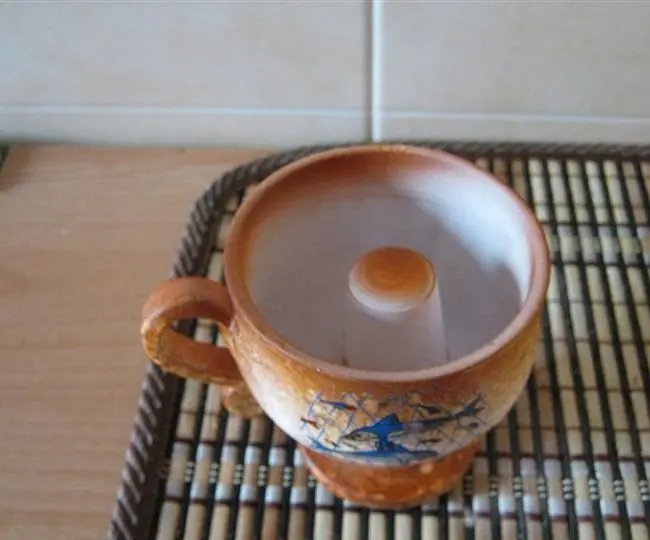Contents
The Cup of Pythagoras is a little-known invention of the ancient Greek philosopher and mathematician, about whose life little information has been preserved. The vessel is also called the Cup of Temperance, because if you fill the container to the brim, the liquid will pour out of it. The mechanism works due to a curved tube placed in the center with knees of different lengths. It is not known exactly why Pythagoras invented the design, but today the secret bowls are just a fun souvenir that is sold in all tourist areas of Greece.
Origin of the Pythagorean cup
The biographies of Pythagoras were written after the death of the philosopher, therefore they contain many legends. According to the most common version, the scientist was born on the island of Samos and in his youth traveled for many years in the countries of the East, where he studied astronomy and mathematics. After returning to his homeland, Pythagoras took an active part in the construction of the island’s water supply system.
According to legend, he invented the cup in 530 BC. e., to prevent the drunkenness of workers employed at the construction site. When more was poured into the vessel, the liquid poured out, and the greedy one was left with nothing.
There is a different opinion about the origin of the bowl. Since the inhabitants of Samos experienced a shortage of fresh water, the vessels were used to save money. The bowls with the secret were handed out to the slaves, and they had to carefully monitor the level of the liquid so as not to suffer from thirst later.

The problem with the island’s water supply was solved only after the coming to power of the tyrant Polycrates. The ruler ordered to punch a tunnel in the mountain range, through which water entered the city from a large source located in the mountains. Pythagoras did not take part in the construction of the aqueduct, since by that time he had already left Samos.
Greek guides prefer to present tourists with a less rigid version and associate the appearance of the bowl with the philosophical teachings of Pythagoras. During his travels in the East, the mathematician was imbued with the idea of the transmigration of souls and believed in subsequent reincarnations. The philosopher encouraged followers to asceticism, opposed the killing of animals and adhered to a vegetarian diet. It is believed that Pythagoras created a bowl for his students to call them to moderation and wean them from drunkenness and excesses.
The principle of operation of the Pythagorean cup
The vessel looks like an ordinary drinking bowl, with one exception – in the center there is a column, inside of which there is a curved channel with a design resembling a siphon. One end of the tube is brought to the bottom of the bowl, and the other end is out through a small hole. At the same time, the lower part is made very thick so that the ends of the tube are at different heights.
The device works on the principle of communicating vessels – as long as the liquid level is below the mark on the inner walls, the mug can be used for its intended purpose. As soon as the bowl overflows, the contents enter the curved tube and flow out.

There is evidence that the ideas of Pythagoras were successfully developed by the Greek mathematician and mechanic Hero of Alexandria, who lived in the XNUMXst century AD. e. In his inventions, he used hydraulic mechanisms that worked on a similar principle and set the figures in motion in complex fountains.
Another use of the Pythagorean cup is practical jokes. During excavations in Croatia, archaeologists discovered a silver vessel made in the XNUMXth century AD. e. It is believed that the artifact belonged to the emperor of the Eastern Roman Empire, Valens, since the bowl was found in the place where the palace of the ruler was previously located.
In the center of the silver piece is a figurine of Tantalus sitting over a large stone, the mechanism is hidden inside the sculpture. The character has a symbolic meaning. According to ancient Greek myth, the titan decided to test the omniscience of the inhabitants of Olympus, killed his own son and served a dish prepared from his meat to the table. As punishment, the gods threw Tantalus into Hades and deprived him of the opportunity to satisfy his hunger and thirst. In the underworld, the criminal sees a lake and fruit trees in front of him, but when he tries to get drunk or pick fruits, everything around him turns to dust. Therefore, another name for the vessel is the Tantalum bowl.

Mug of Pythagoras today
The Cup of Temperance is an original souvenir brought by tourists from their travels to the Mediterranean countries. Glasses are sold in souvenir shops in mainland Greece, Crete, Cyprus and Samos. The design is different: there are both simple earthenware with a modest pattern, and lacquered glasses, decorated with complex paintings in the antique style. A large assortment of mugs with a secret is presented on Asian marketplaces in sections dedicated to draws.

A mug of Pythagoras, if desired, is easy to make on your own. To do this, you need a plastic glass and a curved straw for cocktails. A hole is made in the bottom of the container and a straw is pulled through it, which is previously given a U-shape. It will be difficult to play friends with the help of such a construction, but it is quite possible to conduct a fascinating physical experiment.









